You’re driving the RAM 2500 truck, cruising on the road, and suddenly, this message appears on the instrument panel: “5 MPH Max Speed in 100 mi, Service DEF System, See Dealer.”
Of all the warning messages that can appear on your RAM truck’s screen, this one is arguably the most troublesome, as you have to deal with a countdown to limp mode and some potential problem(s) with the DEF system at the same time.
As unusual as this message sounds, it’s there for a reason.
In this post, we’ll discuss all of the possible problems that can trigger it and different methods to fix them.
How To Reset The Service DEF System, See Dealer Message?
The first solution you can try to reset the ‘service DEF system, see dealer‘ warning message is disconnecting the negative battery terminal for 5-10 minutes.
It will clear the ECU‘s memory, including the stored codes and warning messages, and restore it to default settings.
That said, if this message was triggered due to a faulty DEF-related component, it’ll reappear soon. In such a situation, you’ll need to scan the error codes generated by the ECU through an OBD-II code scanner.
The error codes will lead you towards that faulty component. For example, the P208A code indicates a faulty DEF pump or injector.
The P2048 points toward the DEF injector, the P203F is related to low or poor-quality exhaust fluid, and so on.
What is the DEF System?
Before addressing the warning message, we need to discuss the DEF system and its importance.
Simply put, the DEF (Diesel Exhaust Fluid) system is designed to minimize harmful emissions, like the nitrogen oxides (NOx), produced by diesel trucks, such as RAM 2500 and 3500.
The core component of this system is the exhaust fluid, which is injected into the exhaust stream of diesel vehicles.
This fluid mixes with the exhaust gases to start a chemical reaction (due to high temperature) in which it vaporizes into ammonia (NH3) and carbon dioxide (CO2).
The ammonia then reacts with the NOx in the exhaust on the surface of the catalyst, converting it into nitrogen (N2) and water vapors (H2O) – two harmless compounds.
It’s a relatively new addition and has been featured in trucks for the last decade or so, after the governmantal bodies across the globe made regulations to put a crackdown on diesel-engine vehicles.
What Does The Service DEF System, See Dealer Message Mean?
Unless your ECU is glitching, the ‘service DEF system, see dealer’ message means there’s an issue with some component in the DEF system, which has increased the production of harmful exhaust gases.
The ECU detects this issue and reduces the engine power to keep the production rate of the exhaust gases in check, which is why you get a limp mode countdown.
It mostly occurs in RAM 2500 and 3500 trucks, but I’ve also seen it in some Jeep vehicles, such as Grand Cherokee.
Another theory behind this countdown is that it’s there to encourage the truck owners to fix these issues as soon as possible.
That’s because, depending on your location, these increased emissions can cause the authorities to fine you.
Usually, it’s 5 MPH Max Speed in 100 or 150 mi, but I’ve also seen some RAM owners get a shorter countdown, such as 5 MPH Max Speed in 28 mi.
How to Clear Service DEF System See Dealer Message?
As said earlier, if this warning message keeps reappearing, you should use a code scanner to get the error code and fix that faulty component.
If you don’t have a scanner, the only option left is to check all of those components mentioned below one by one.
1. Check DEF Level And Quality

If you get the P203F code on the scanner, it means the DEF fluid level is low in your vehicle, and that’s what caused the service DEF system message to appear.
This fluid is made up of 32.5% urea + 67.5% deionized water and is injected into the exhaust stream of diesel vehicles to break down into ammonia.
This ammonia then reacts with NOx gases in the presence of a catalyst to form nitrogen and water vapor.
If this fluid gets low in quantity, it won’t be able to start the chemical reaction, and the production rate of harmful emissions will increase, causing the ECU to generate that warning message.
Most people don’t pay much attention to the DEF fluid level unless it’s almost empty.
In reality, however, the RAM trucks will get the warning messages as soon as the fluid level goes less than 20%.
Therefore, the first thing you should do is to refill the DEF tank with fresh fluid. Make sure the fluid level goes past the 50% mark, and then check if anything changes.
On the other hand, if you’ve recently added the fresh fluid and have been getting the warning message since then, it indicates that the fluid you added was of poor quality.
In such a situation, you should drain all of the existing fluid before refilling the tank with the fresh one.
2. Check DEF Sensor
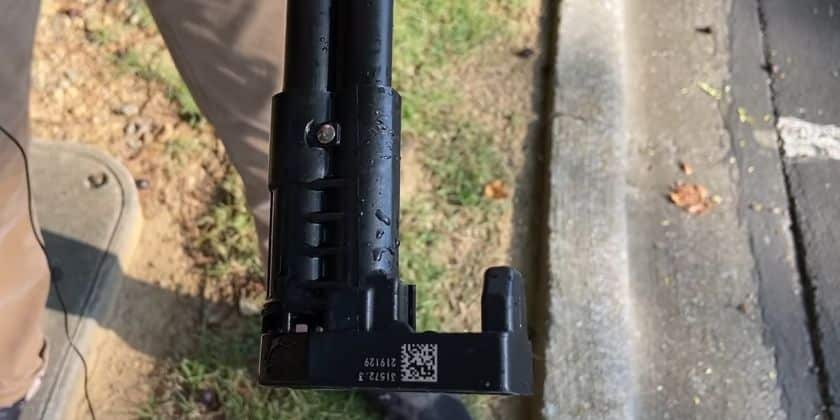
If you have a 2019-2021 RAM 2500 or 3500 truck and get the service DEF system message only in cold temperatures, the culprit could be the DEF sensor.
There are a number of scenarios in which the DEF sensor can trigger the warning message.
The first one is that you’ve overfilled the fluid in the tank.
As this sensor uses ultra-sonic frequency signals to measure the fluid level, you need to have some distance between the fluid level and the top of the DEF tank.
In the case of overflow, the ultra-sonic frequencies will not work (as there’s no airspace between the fluid and the top side of the tank), and the sensor won’t be able to detect the fluid level.
In such a situation, all you need to do is to drain the fluid a little bit.
The second issue is the residual layer of ice forming in the tank due to cold weather.
This layer of ice prevents the ultrasonic frequency sounds from working, and you get the service DEF system warning message and the P203E error code.
In such a situation, you only have to start driving the vehicle. As soon as the engine starts running, the DEF tank will start to thaw, and the ice layer will turn to liquid shortly afterward.
The last scenario is the DEF crystallization. If you leave the vehicle in cold temperatures for extended time durations, there will be a DEF crystal build-up on the bottom of the tank as the water evaporates.
Like the ice layer, these DEF crystals can cause the DEF sensor to malfunction and trigger the service def system warning message.
This issue can be fixed by flushing the DEF tank and cleaning the pump components using fresh DEF/distilled water.
3. Check DEF Injector

The next component we’ll check is the DEF injector, as it’s responsible for injecting small amounts of exhaust fluid into the exhaust system.
If this injector goes bad, it’ll affect the amount and timing of the fluid. As a result, the NOx may not turn into nitrogen completely. The ECU will detect this issue and trigger the service def system warning.
Other than that, the ECU will also generate different error codes, such as P202E, P204F, P2048, or P20E8.
Therefore, if you’re getting any of these codes, you should physically inspect the DEF injector, as shown in the video below.
In most cases, the injector is not damaged but is rather clogged with deposits (a common issue with poor-quality DEF) and can work again after cleaning.
However, if it doesn’t work after cleaning, you should test the injector and replace it if necessary.
4. Check the Reductant Heater
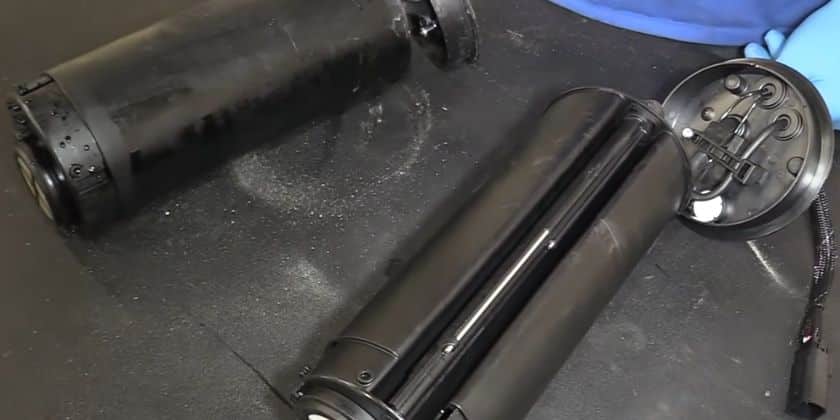
If you’re getting the P20B9 or P20BA codes on the OBD-II scanner, you should get the reductant heater checked by a mechanic.
The reductant heater is a component that prevents the exhaust fluid from freezing/crystallizing in cold temperatures.
As this fluid consists of urea and water, it can freeze at temperatures below 12°F (-11°C). The reductant heater ensures that the fluid in the DEF tank and supply lines always remains in a liquid state.
In the case of any malfunction, the exhaust fluid will freeze and not be injected properly into the exhaust system.
This will result in increased harmful emissions, which the sensors will report to the ECM.
The ECM will detect it as a DEF system failure and show the service def system warning to the driver.
5. Check DEF Pump
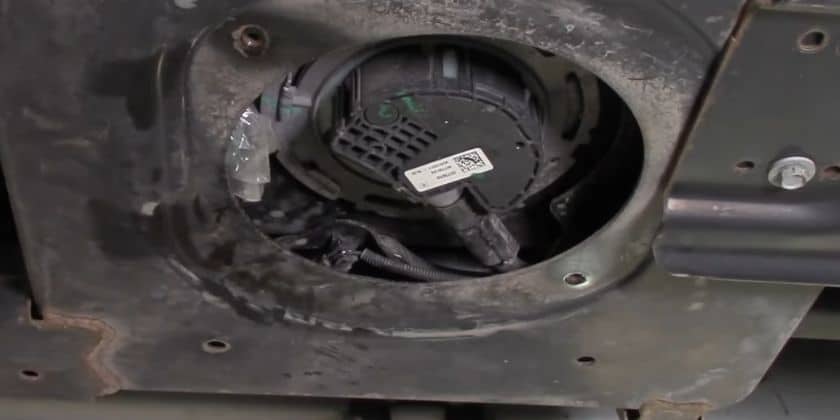
If the exhaust fluid and sensor in your vehicle are good, it’s time to check the DEF pump.
It’s a component used to pump the DEF from the tank to the injector via the supply line.
This pump can go bad over time due to mechanical failure, corrosion, clogging, etc., and will not inject the fluid properly.
The DEF injector will get little/no fluid, and the NOx level will get high, resulting in the DEF system warning.
As far as the OBD-II error codes go, you’ll get a P208A, P20E9, or P20E8 code for a faulty DEF pump.
The latter is a little confusing as it can also appear due to a faulty DEF injector, which leads many to wonder which of these components is bad.
One easy way to find it out is to temporarily remove the def line from the injector and start the vehicle.
If you see a consistent amount of DEF coming out of the line, it means the pump is working and the problem is with the injector.
However, if there is no fluid coming out, it means the pump is not working and should be fixed/replaced.
6. Check DEF Line
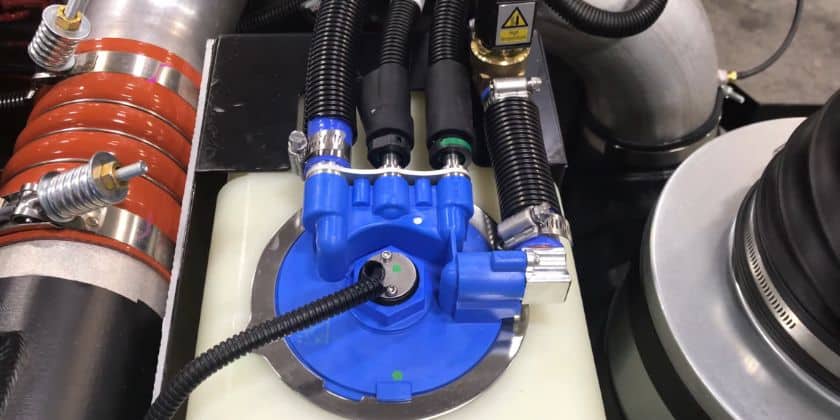
Although rare, sometimes the DEF line can be the culprit behind the service DEF system message.
Just as the fuel line carries the fuel from the fuel tank to the engine, the DEF line transports the exhaust fluid from the DEF tank to the injector.
If this line is damaged and starts leaking, the def level will get low, which will cause the def warning message to appear.
7. Check DEF-Related Fuses
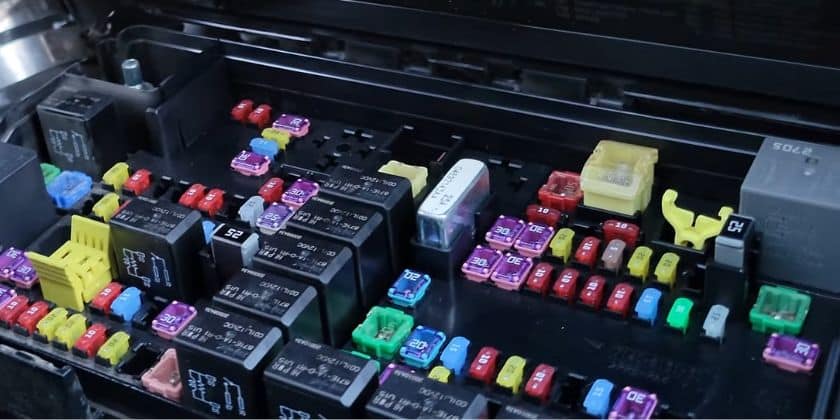
A blown fuse can be another less common reason for service DEF system light.
Like in other vehicle systems, many components of the DEF system have their dedicated fuses in the fuse box.
If any of the fuses blows due to electric overload, its corresponding component won’t be able to get power from the system and will remain off.
As a result, the DEF system won’t work, and the ECU will activate the def warning message as it sees this issue as some DEF system malfunction.
Frequently Asked Questions
Can You Drive With Low Diesel Exhaust Fluid?
Yes, it’s possible to drive with low diesel exhaust fluid. However, it’s generally not recommended to do so, as it will cause the ECU to reduce your vehicle’s speed after 70-100 miles.
How Do You Know If DEF Fluid Is Bad?
The easiest way to find out whether the DEF fluid is bad is through visual inspection.
A poor-quality DEF fluid will be cloudy, discolored, and will have visible particles floating in it, indicating it to be contaminated or degraded.
What Are The Most Common Problems in the DEF system?
The most common problems related to the DEF system are Low/poor-quality DEF fluids, accidentally putting DEF fluid into the diesel tank, crystalized injector nuzzle, and cracks/leaks in the DEF tank.
Will a Little DEF hurt a Diesel Engine?
Yes, even a small amount of DEF in the diesel tank can be harmful to the fuel system and the engine as it can cause corrosion in them.
Therefore, if you feel like you’ve accidentally put some fluid in the fuel tank, don’t start the engine. Instead, drain all of the fuel and DEF mixture from the tank immediately.
After draining the tank, flush the entire fuel system (to remove any residual DEF) before adding new fuel.
Can You Clean a DEF Sensor?
Yes, the DEF sensor can easily be cleaned by gently wiping off the dirt or residue through a clean/dry piece of cloth.
You can also use a specialized sensor cleaner or isopropyl alcohol for better results, but that would depend on the manufacturer’s specifications.
How Much Does DEF Fluid Cost?
Most of the high-quality exhaust fluids cost $20-$25 per gallon.
